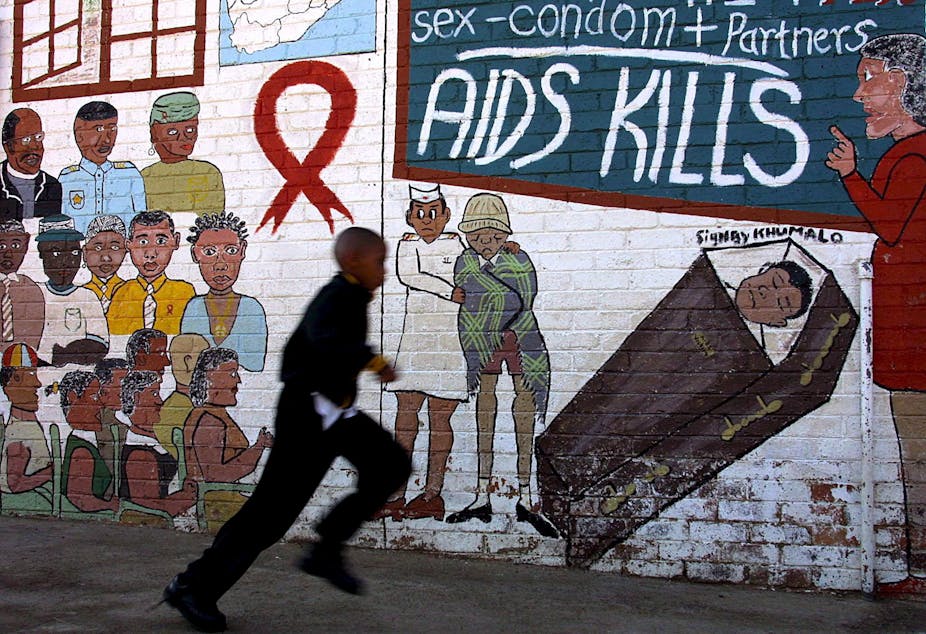
The coronavirus pandemic is accompanied by what the World Health Organisation describes as an “infodemic” – misinformation, disinformation or conspiracy theories: “coronavirus myths”. These circulate on social media and are further disseminated by influencers, the click-bait infotainment “penny dreadfuls” of the internet, mainstream media which repeat them for audiences to shake their heads at the apparent credulity of others, and some world leaders.
In response, myth-busters attempt to squash coronavirus myths. The modus operandi is to report the myth and then rebut it with science, medical research and expert opinion. The problem with this approach is that science, medicine and experts are, for now, handicapped. There is no vaccine and they have no other easy solution to offer. Given this, alternative explanations are bound to emerge.
All epidemics are accompanied by what leading academic Paula Treichler described, in the context of HIV/AIDS, as epidemics of signification. The key difference with the internet is that contestation over the disease is easier to access.
But, just as in the early years of HIV/AIDS, science is once again on the back foot. This means that today’s batteries of myth busters will be just as ineffective as their pre-internet predecessors.
In 2008 and 2009, before residents in South Africa’s townships – where much of the poor and predominantly African population lives – had significant internet access, I conducted an action research project with working class HIV/AIDS peer educators to investigate and combat the many non-scientific explanations of HIV/AIDS .
The project took seriously the HIV/AIDS myths that the peer educators were encountering. In doing so we were able to gain insights into the origin of these myths and why they were so durable in the face of public health campaigns. As an action research project we used these insights to develop responses based not on repeating scientific information, but on messages that would resonate with beliefs and ideas within the communities of the peer educators. I believe there are lessons here for the current coronavirus pandemic.
Insights
One myth doing the rounds at the time was that whites created AIDS to control the African population. This had circulated for decades despite sustained public health messaging.
Then, as now, science was on the back foot, with no cure for the disease.
I came to see these alternative explanations not as myths, or nonsense, but folk theories which, in the minds of many, were legitimate alternative explanations to that science. Along the lines of the explanation provided by Hungarian philosopher of mathematics and science Imre Lakatos of scientific research programmes, these myths about the disease were “auxiliary theories” linked, within the South African AIDS epidemic, to a trinity of “core ideas”: a belief in God, racial oppression, and traditional African beliefs.
Attempting to defeat these folk theories with science achieved little; the myth busters of the AIDS epidemic were talking past those they were trying to convince.
Convincing people to follow public health responses is much easier when the peril can be seen. But with AIDS the long incubation period, and stigma, hid the disease. One of the challenges with COVID-19 is that someone can be infected, but not show symptoms. And once they are visible the opportunity for effective public health responses in poor and crowded communities is compromised.
A different approach
Rather than repeating accurate, but ineffective, public health messages over HIV/AIDS, I worked with peer educators on alternative ways of shifting attitudes.
We identified HIV/AIDS folk theories circulating in their communities and ran workshops designed to develop stories, sketches and parables in local idiom that could counter these in easy to grasp and engaging ways. For example, to the belief that God could cure AIDS and that antiretroviral treatment was unnecessary, they developed the story of a man who encounters a lion and, kneeling to pray, pleads with God to save him. The lion devours him. The message? He should have run and asked God to help him run faster. The lesson? Take antiretroviral drugs and pray that God will keep you healthy.
Verifying the impact of specific interventions aimed at behavioural change within the complex reality of an epidemic is all but impossible. Nevertheless peer educators reported the interventions positively, and said that they helped them move from previous efforts too often limited to “preaching to the choir”.
As the coronavirus pandemic unfolds so too a matrix of folk theories, reflecting deep beliefs, fears and concerns, is becoming visible. These include xenophobia, nationalism, new technologies, surveillance, and distrust of global elites.
These folk theories resonate with people whose trust in science or experts is, at best, conditional. Confronting them with science in an attempt to overcome resistance to public health measures and social distancing practice will have limited impact.
An approach that reaches beyond “the choir” is needed.
Next steps
Front-line health and community workers should be linked to storytellers, comedians, directors, scriptwriters and others to develop, in local idiom, easy to understand messages about the virus and preventative behaviour in entertaining and catchy formats. These should, indirectly, be aimed at countering the impact of identified folk theories and promoting behavioural change, not in headlong, hectoring attacks but using softer power and where possible acting in tactical unity, as with The Man Who Met A Lion.
The HIV/AIDS peer educators had to slip their stories and parables one by one into ongoing, real-time conversation. Today, the outputs from collaborations could be inserted into social media networks, to “fight fire with fire”. They could be released as amateurish-feeling and unbranded video clips, voice messages and memes.
The degree to which these were forwarded, and effective, would depend on how arresting and entertaining they were.
Such a response will not solve the increasingly recognised cause of the pandemic’s ferocity on precarious individuals and groups. But it would provide a low-cost, complementary approach to mitigate the impending catastrophe in poor communities.![]()
David Dickinson, Professor of Sociology, University of the Witwatersrand
This article is republished from The Conversation under a Creative Commons license.

